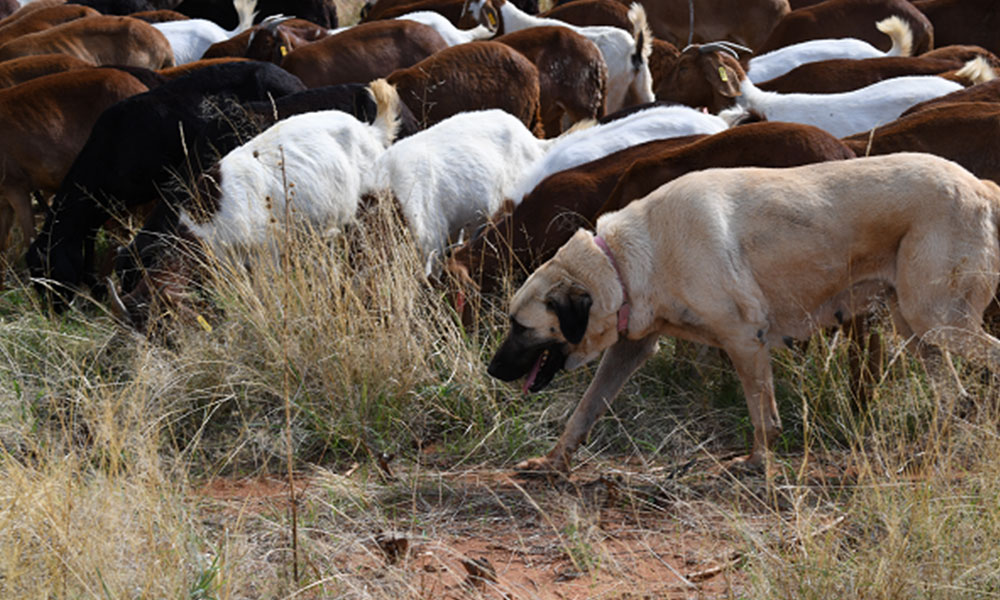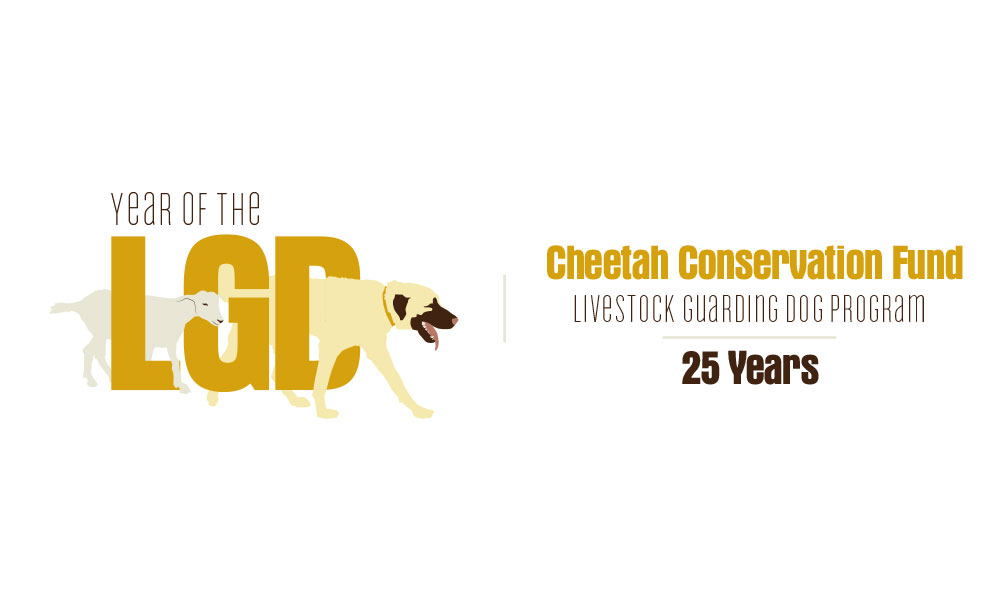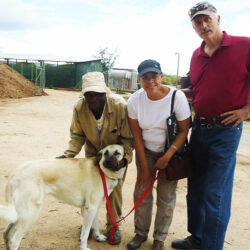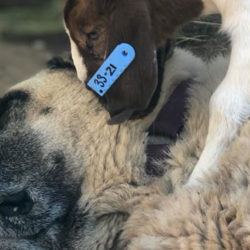The Year of the Livestock Guarding Dog
-

- by Dr. Laurie Marker February 12, 2019

Banner photo top by Isabelle Groc
This is a very special year and month for CCF. Our Livestock Guarding Dog program began 25 years ago in February. CCF has decided to celebrate the program anniversary by naming 2019 the Year of the Livestock Guarding Dog. The program holds a special place in my heart. It has been incredibly successful at mitigating human/wildlife conflict not only in Namibia but across the cheetah’s current range.
In the late 70’s, when I was working at Wildlife Safari in Oregon, I became aware of a study happening on local livestock farms. The study was part of a project attempting to address the predation of livestock (specifically sheep) by coyotes in the USA. The study was part of a research partnership between Oregon State University and Hampshire College in Amherst, Massachusetts. The two universities were collecting data on Livestock Guarding Dog effectiveness in Oregon as part of a nationwide project lead by Dr. Raymond and Lorna Coppinger.
In March of 1988, following ten years of research, a paper was published – A Decade of Use of Livestock Guarding Dogs. The three main breeds of dogs used by farmers participating in the study were Maremma, Anatolian shepherd, and Shar Planinetz. All have a long history of guarding livestock across Europe. The research paper revealed that participating farmers using a Livestock Guarding Dog, experienced significant decreases in livestock loss due to predation. These results were very interesting to me as I had witnessed first-hand, nearly a decade before, that cheetahs were being killed by farmers in Namibia as a measure to protect livestock.
When I began CCF in 1990, I knew that I wanted to join the study to see if Livestock Guarding Dogs would be as effective in preventing predation in Africa as they had been in the US. I reached out to Hampshire College and in 1994 we set up a pilot Livestock Guarding Dog (LGD) Program on one of the farms in our research area.

Anatolian shepherds were chosen for many reasons. The breed has a 6,000-year pedigree and history of guarding sheep in Turkey. Their short coats protect them from thorns and bushes being caught in their coats, and make it easier for them to adapt to fluctuating temperatures – both hot and cold. Their independent nature and ability to think for themselves means they don’t need to have people with them to successfully guard their livestock. They were the best choice for the conditions faced on Namibian farmlands. They have the will and drive to travel vast distances with their herd due to their natural loyalty and endurance.
In February, 1994, four Anatolian shepherds, the breed of dogs used in the research that took place in Oregon, were established with herds of sheep and goats here in Namibia. The dogs were donated by the Birinci Kennels in the USA.
To familiarize the Namibian farming community with the program, we held several talks with the Farmers Association. We recognized the importance of engaging directly within the community and made farmer outreach the primary objective to build trust in our first four years of operation. A Hampshire College student, Becky Sartini, monitored the program for a five-month period as a part of her honors thesis.
In June of 1994, CCF and Hampshire College brought in a second student, Katie Emanuel. Katie’s family owned Birinci Kennels and they had donated the first 4 dogs, and she brought another six Anatolian shepherds from their kennels. She also conducted her honors thesis at CCF. All but one were puppies of less than 15 weeks of age, and they were placed on six farms. One was an adult female which we were able to breed later in the year. In August, 11 Anatolian puppies were born at CCF’s base and the puppies were placed in farms at the end of September.

Since the program began, CCF has trained and placed over 650 Livestock Guarding Dogs in Namibia, South Africa and Tanzania. The dogs even guarded the goats belonging to Namibia’s Founding President, HE Dr. Sam Nujoma, and were also placed at two of Namibia’s agricultural colleges, so students could learn more about predator-friendly farming techniques. Farmers who employ a CCF LGD report an 80-100% reduction in livestock losses and while the dogs were intended to protect livestock from cheetahs, we found that they are equally effective in guarding against other predators like leopard, jackal and caracal.
The success of the program has inspired several hundred stories in publications and multiple documentary film crews have come from around the world to take footage of the dogs in action. Recently the Namibian Broadcasting Corporation showed a feature on Livestock Guarding Dogs, interviewing farmers about the effectiveness of the program on their farms.
I hope you will join me and hundreds of Namibian farmers in celebrating the 25th anniversary of CCF’s Livestock Guarding Dog Program this year. Please consider supporting the future of the program by becoming a sponsor during 2019, the Year of the Livestock Guarding Dog.

Related Reading
-
October 3, 2022
Eulogy for Aleya – CCF’s Stubborn Sweetheart -
April 8, 2022
Puppy Delivery Journey with Gebhardt




